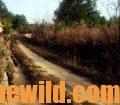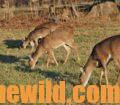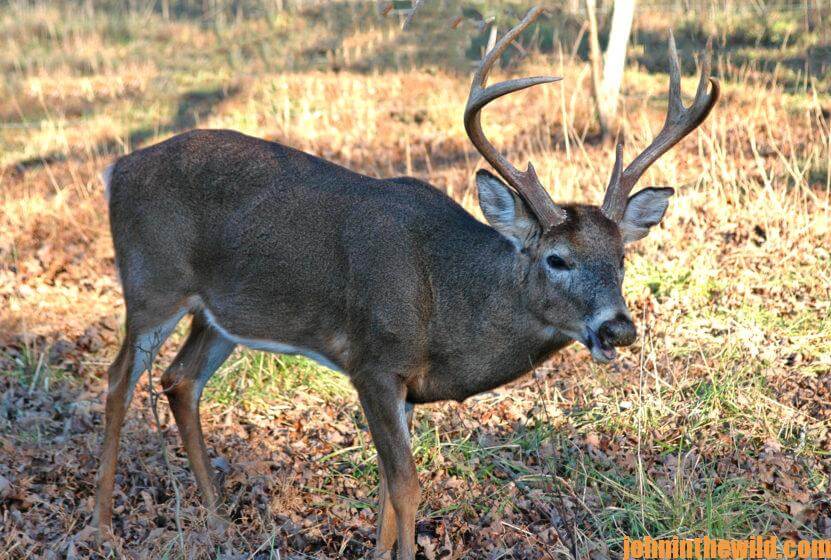Editor’s Note: Although you may have quality bucks in the woods you hunt, if you can’t concentrate those deer to enable you to see them during daylight hours, you’ll never get a shot at the deer. Dr. Keith Causey, a retired professor of wildlife research at Auburn University in Auburn, Alabama, has hunted and researched white-tailed deer for over 30 years.
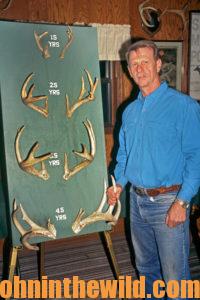 “I build honey holes to take bucks,” Causey explains. “On the 750 acres I hunt, I fertilize the naturally-occurring trees, plants and shrubs on which deer feed.” Causey likes to fertilize plum thickets but only fertilizes the plum trees on the side of the thicket where he has his tree stand. Then these plum trees will produce the biggest and the largest number of plums and concentrate the deer feeding on the plums under Causey’s stand. If he hunts next to a clearcut with a big honeysuckle patch on the edge, Causey will fertilize one section of that honeysuckle. Although the honeysuckle patch may run for 50 to 100 yards, the vines producing the sweetest leaves will be the ones Causey has fertilized close to his tree stand where he will have an easy shot at a buck. However, Causey’s fertilization program doesn’t include only soft mast. “I also fertilize oak trees,” Causey reports. “When I hunt a hardwood bottom with several nut-producing trees, I find a tree where most of the deer seem to eat. Then before the next hunting season, I fertilize that tree. Because I know the deer will feed around this tree more frequently than other trees, I use the fertilizer to help that particular tree create bigger, sweeter and more nutritious nuts than the other trees in that section of the land. I believe the deer will come to the tree more often because of the amount and sweet taste of the food. I can concentrate the deer under this tree and often pull them away from the other trees.”
“I build honey holes to take bucks,” Causey explains. “On the 750 acres I hunt, I fertilize the naturally-occurring trees, plants and shrubs on which deer feed.” Causey likes to fertilize plum thickets but only fertilizes the plum trees on the side of the thicket where he has his tree stand. Then these plum trees will produce the biggest and the largest number of plums and concentrate the deer feeding on the plums under Causey’s stand. If he hunts next to a clearcut with a big honeysuckle patch on the edge, Causey will fertilize one section of that honeysuckle. Although the honeysuckle patch may run for 50 to 100 yards, the vines producing the sweetest leaves will be the ones Causey has fertilized close to his tree stand where he will have an easy shot at a buck. However, Causey’s fertilization program doesn’t include only soft mast. “I also fertilize oak trees,” Causey reports. “When I hunt a hardwood bottom with several nut-producing trees, I find a tree where most of the deer seem to eat. Then before the next hunting season, I fertilize that tree. Because I know the deer will feed around this tree more frequently than other trees, I use the fertilizer to help that particular tree create bigger, sweeter and more nutritious nuts than the other trees in that section of the land. I believe the deer will come to the tree more often because of the amount and sweet taste of the food. I can concentrate the deer under this tree and often pull them away from the other trees.”
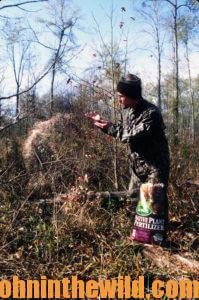 When using commercially-prepared fertilizers to make bucks come to you, you need to know what food the deer prefer to feed on throughout hunting season. Put out fertilizer before hunting season in specific areas where you find the deer’s favorite food sources for each time of the year. For instance, if you know the deer like plums or persimmons in the early part of the season, fertilize one portion of a plum or a persimmon patch. If you think the deer will move next to chestnut oak acorns, place fertilizer under the chestnut oak acorn trees you intend to hunt. If you know the deer prefer honeysuckle and greenbrier late in the season, fertilize those honeysuckle and greenbrier thickets early. By using commercially-prepared fertilizer, you can create honeyholes for big bucks you can hunt all season long. However, don’t tell your friends and neighbors where you’ve made a honey hole, or they’ll take the bucks you’ve attracted.
When using commercially-prepared fertilizers to make bucks come to you, you need to know what food the deer prefer to feed on throughout hunting season. Put out fertilizer before hunting season in specific areas where you find the deer’s favorite food sources for each time of the year. For instance, if you know the deer like plums or persimmons in the early part of the season, fertilize one portion of a plum or a persimmon patch. If you think the deer will move next to chestnut oak acorns, place fertilizer under the chestnut oak acorn trees you intend to hunt. If you know the deer prefer honeysuckle and greenbrier late in the season, fertilize those honeysuckle and greenbrier thickets early. By using commercially-prepared fertilizer, you can create honeyholes for big bucks you can hunt all season long. However, don’t tell your friends and neighbors where you’ve made a honey hole, or they’ll take the bucks you’ve attracted.
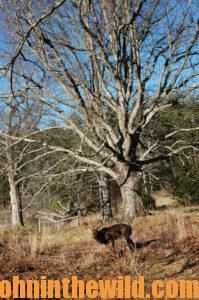 You can also build a honey hole by cross-scraping. Many commercially-prepared deer lures allow the hunter to create mock scrapes or to leave the odor of does or bucks at an active scrape. However, you may pull a big buck into a scraping area through a system of cross-scraping. Go to an active scrape wearing rubber gloves and rubber boots. Take a small gardener’s shovel, some ratchet cutters and Ziploc bags with you. Once you have on your gloves, scoop up some of the dirt containing the buck’s urine in the scrape with your shovel. Put that dirt in the Ziploc bag. Also clip one of the overhanging branches the buck has used to leave the scent from his eyes, nose and mouth. Place the branch in another Ziploc bag.
You can also build a honey hole by cross-scraping. Many commercially-prepared deer lures allow the hunter to create mock scrapes or to leave the odor of does or bucks at an active scrape. However, you may pull a big buck into a scraping area through a system of cross-scraping. Go to an active scrape wearing rubber gloves and rubber boots. Take a small gardener’s shovel, some ratchet cutters and Ziploc bags with you. Once you have on your gloves, scoop up some of the dirt containing the buck’s urine in the scrape with your shovel. Put that dirt in the Ziploc bag. Also clip one of the overhanging branches the buck has used to leave the scent from his eyes, nose and mouth. Place the branch in another Ziploc bag.
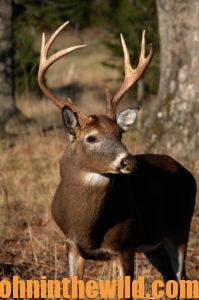 Take the dirt and the branch to another scrape on another part of the property. With your rubber gloves on, pour the dirt out of the bag and into the new scrape. Utilize a small piece of green twine to tie the branch you’ve clipped onto the branch the buck will use at the new scrape. By wearing rubber gloves and rubber boots, you’ll leave little odor when you try to fool a big buck. You have told the buck at the new scrape that another buck or group of bucks has moved into his territory during the rut. Because deer are territorially-minded, the buck at the second scrape will check this scrape more often to learn which deer use it, especially the intruder buck that has begun to work his scrape.
Take the dirt and the branch to another scrape on another part of the property. With your rubber gloves on, pour the dirt out of the bag and into the new scrape. Utilize a small piece of green twine to tie the branch you’ve clipped onto the branch the buck will use at the new scrape. By wearing rubber gloves and rubber boots, you’ll leave little odor when you try to fool a big buck. You have told the buck at the new scrape that another buck or group of bucks has moved into his territory during the rut. Because deer are territorially-minded, the buck at the second scrape will check this scrape more often to learn which deer use it, especially the intruder buck that has begun to work his scrape.
Often you can’t see a trophy buck during daylight hours because to obtain that trophy status, the buck knows he must hide in thick cover and move only at night or when he breeds. Utilizing these tricky tactics that have produced bucks in the past for hunters may force those older-age-class deer to come close enough for you to take a shot.
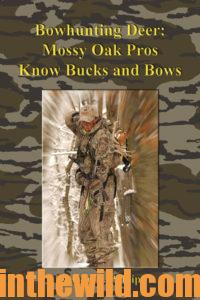 To learn more about hunting for deer, check out John E. Phillips’ bowhunting books, available in Kindle and print, “Bowhunting Deer: Mossy Oak Pros Know Bucks and Bows” (http://amzn.to/1QGvdQx) and “Bowhunting Deer: The Secrets of the PSE Pros” (http://amzn.to/VBr1qW). You may have to copy and paste this link into your browser. (When you click on this book, notice on the left where Amazon says you can read 10% of the book for free).
To learn more about hunting for deer, check out John E. Phillips’ bowhunting books, available in Kindle and print, “Bowhunting Deer: Mossy Oak Pros Know Bucks and Bows” (http://amzn.to/1QGvdQx) and “Bowhunting Deer: The Secrets of the PSE Pros” (http://amzn.to/VBr1qW). You may have to copy and paste this link into your browser. (When you click on this book, notice on the left where Amazon says you can read 10% of the book for free).
John E. Phillips has published several more books this fall and winter of 2020 you’ll enjoy.
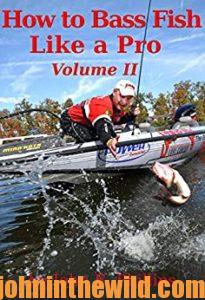 1) “How to Bass Fish Like a Pro, Volume II” – available in Kindle and print at https://www.amazon.com/gp/product/B08LBD7M4G/ref=dbs_a_def_rwt_hsch_vapi_taft_p5_i2
1) “How to Bass Fish Like a Pro, Volume II” – available in Kindle and print at https://www.amazon.com/gp/product/B08LBD7M4G/ref=dbs_a_def_rwt_hsch_vapi_taft_p5_i2
In “How to Bass Fish Like a Pro, Volume II,” you’ll learn tips and tactics from 21+ Bassmaster Classic winners, two Major League Fishing champions and 20+ Bassmaster Anglers of the Year about some of the dramatic changes in bass fishing.
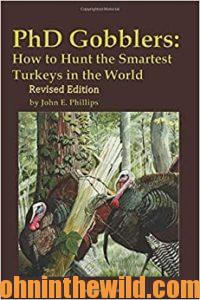 2) “PhD Gobblers: How to Hunt the Smartest Turkeys in the World, Revised Edition” – available in Kindle, Print and Audible at https://www.amazon.com/gp/product/B083V83RLG/ref=dbs_a_def_rwt_hsch_vapi_taft_p4_i8
2) “PhD Gobblers: How to Hunt the Smartest Turkeys in the World, Revised Edition” – available in Kindle, Print and Audible at https://www.amazon.com/gp/product/B083V83RLG/ref=dbs_a_def_rwt_hsch_vapi_taft_p4_i8
Turkeys that have earned their PhDs in the turkey-hunting wars know more about hunter-dodging than most hunters know about turkey hunting. These turkeys have built such a huge database on humans they’ve earned their PhDs.
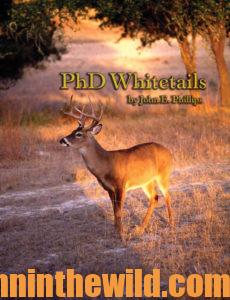 3) “PhD Whitetails” – available in Kindle and Print and soon to be in Audible at https://www.amazon.com/gp/product/1979793387/ref=dbs_a_def_rwt_hsch_vapi_taft_p7_i3
3) “PhD Whitetails” – available in Kindle and Print and soon to be in Audible at https://www.amazon.com/gp/product/1979793387/ref=dbs_a_def_rwt_hsch_vapi_taft_p7_i3
To become a “PhD Whitetail,” a whitetail deer has to have gone to school on hunters. He knows when to move, where to move, and how to move to avoid detection. The professional hunters in this book have spent their lifetimes finding these bucks with doctorates.
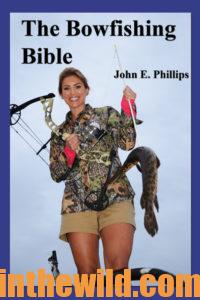 4) “The Bowfishing Bible” – available in Kindle, Print and Audible at
4) “The Bowfishing Bible” – available in Kindle, Print and Audible at
https://www.amazon.com/gp/product/B01D566HM0/ref=dbs_a_def_rwt_hsch_vapi_taft_p4_i1
This book doesn’t promise salvation or a ticket to heaven, but it does give you much of the information you need to be a happy, successful, productive and winning bowfisherman.
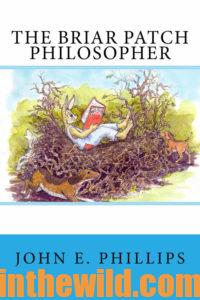 5) “The Briar Patch Philosopher” – available in Kindle, Print and Audible at https://www.amazon.com/gp/product/B00MX0ZODI/ref=dbs_a_def_rwt_hsch_vapi_taft_p5_i4
5) “The Briar Patch Philosopher” – available in Kindle, Print and Audible at https://www.amazon.com/gp/product/B00MX0ZODI/ref=dbs_a_def_rwt_hsch_vapi_taft_p5_i4
Some of the reviews for this book include statements like, “I find myself looking through these wonderful thoughts about life, courage, love, children and God. This collection of sayings are very useful in helping me control my emotions. Some of my favorites include:
“Feelings change, Truth remains.”
“Embrace fear, because it’s an excellent motivator.”
“Life is a race. The beginning, we can’t control, and the end can’t be determined. But how well we run in the middle is all that counts. “

